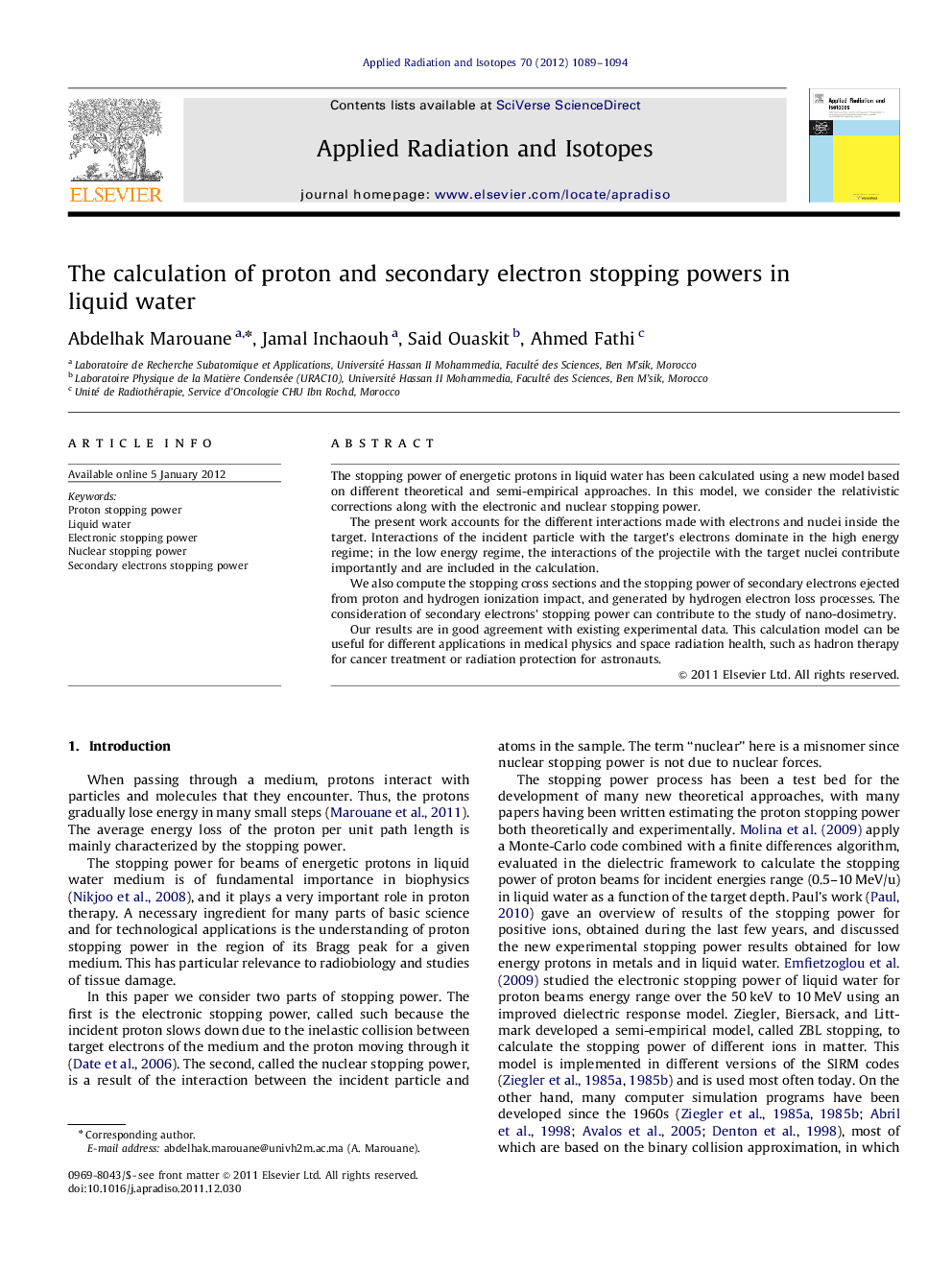| Article ID | Journal | Published Year | Pages | File Type |
|---|---|---|---|---|
| 1876111 | Applied Radiation and Isotopes | 2012 | 6 Pages |
The stopping power of energetic protons in liquid water has been calculated using a new model based on different theoretical and semi-empirical approaches. In this model, we consider the relativistic corrections along with the electronic and nuclear stopping power.The present work accounts for the different interactions made with electrons and nuclei inside the target. Interactions of the incident particle with the target's electrons dominate in the high energy regime; in the low energy regime, the interactions of the projectile with the target nuclei contribute importantly and are included in the calculation.We also compute the stopping cross sections and the stopping power of secondary electrons ejected from proton and hydrogen ionization impact, and generated by hydrogen electron loss processes. The consideration of secondary electrons' stopping power can contribute to the study of nano-dosimetry.Our results are in good agreement with existing experimental data. This calculation model can be useful for different applications in medical physics and space radiation health, such as hadron therapy for cancer treatment or radiation protection for astronauts.
► We discussed the stopping cross sections at the Bragg peak region of primary and secondary processes. ► We considered the corrections of incident particle energy focusing on the Rudds semi-empirical model. ► We calculated the electronic and nuclear stopping power, and we deduced the total stopping power. ► We calculated the stopping power of the secondary electrons.
